CAMELOT... “by the bay”
an experience of dialog: the past, present and future of becoming human
|
|
click on the bow of CAMELOT to go “Why CAMELOT” and the stern to go to CAMELOT’s Legacy site web |

Camelot
- Sailing Pine Island Sound - 1996 |
|
|
|
| CAMELOT provides, as all architecture does, an unique viewpoint on the world. She is an artful meeting of utility, shelter and expression. To sail CAMELOT, in the company of friends, to prepare food and eat together on Her decks, to discuss ideas and issues of common interest in the spirit of authentic dialog, is to see the Universe, one’s community and self, in a new way. |
| Herb Caen called San Francisco “Baghdad By the Bay.” He was San Francisco’s 20th Century Chronicler. To him, San Francisco was a magical setting and experience, and he infused his sense of this place into the minds of millions who read his words. |
| NorCal and the “Bay Area Style” are terms which partially capture the essence of a life style - a way of living and working - that is unique to this curious mix of landscape, peoples and time. There are many who articulated this way and built in support of it. In doing so, they helped create it. Millions come to get a taste of this experience. And, some stay forever. |
| This is a place that was founded on gold, was built out of redwood, grew in a matter of decades - while being destroyed once - into a major city, made up its own rules as it went along, became a logistical and industrial center in WWII, a financial powerhouse afterward, and cannot be defined today by any of these attributes. It is bounded on three sides by water and has only three highways in and out of it, two by bridge. The Bay, and its tributaries, stretch from Silicon Valley on the South, to the California Capital and Sierras at the East, North to wine country, and the gateway to the Pacific on the West. This is land that provided for its first peoples an abundant living for thousands of years. The Golden Gate Bridge is its icon. It is a major portal of the Pacific. |
| It is no accident that within this realm, there are major institutions of learning and research; that here the revolution of the 60s thrived and then became part of today’s mainstream; that this is the inventor and still major driver of the knowledge economy; start up location of the first successful new US car company in decades, and the epicenter of a band of artistic/technological/social entrepreneurs who are dedicated to creating an entirely new future. It is no accident at all. This is NorCal, one of the most diverse and abundant economy/ecologies in the world. |
| Human society is in the midst of the largest transformation in known history. In the main, it is fair to say that humanity is backing into its future with little thought nor possessing an effective anticipatory design practice of any significant scale. Awareness of this anomaly is cropping up all over the world. Baghdad By the Bay has as exemplary a tradition of social way finding as can be found anywhere. It is the home of many masters of dialog and codesign. It is tightly connected to innovation centers all over the world. One prototype of a viable future humanity will be created
here. |
| This is the place for CAMELOT. |
|
“If you want to build a ship,
don’t drum up the men to gather wood, organize the work and give orders.
Instead, teach them to yearn for the vast and endless sea...”
Antoine de Saint Exupery
|
| CAMELOT was made, and has evolved to, take on this mission. It is Her 21st Century role to tie the past to the present. And, to the future. A future that can be conceived, designed and built with a far greater level of craft than the present. A future where technology and humans and nature are in harmony. A future where Earth is a work of art... a garden for all life to share and enjoy. |
CAMELOT can practice this synthesis of the “two cultures” and planet and be both a symbol and demonstration of this future reality. On Her decks there can be a piece of the world that sees through the lens of the world that we are in the act of creating. The THERE we are working to bring to HERE on a daily basis. This is the experience of leisure in the 19th Century meaning. It is recreation that is re-creation. A function of art is to make concrete, through some medium, a vision so that it can be experienced as if achieved.
This is CAMELOT’s art. |
|
|
|
Camelot
- Second trip to the Bahamas - 2000 |
|
| |
| |
|
|
| |
As Herb Greene has brilliantly defined and demonstrated, a city requires an Armature to hold together its past, present and future opportunities. This is social memory and shared art. An Armature is both a social process and artifact. San Francisco has an abundance of natural and human created armature elements: the bay, its hills, the fog that rolls in almost nightly, micro climes that change in a matter of a few hundred yards... augmented by cable cars, the bridges, Ferry Building, Coit Tower, Golden Gate Park, Union Square, The Top of the Mark, and many cultural/ethnic districts... all bound together by a rich multi-generational, ethnic, culture. This is a Replacement City as defined by Jane Jachobs. It is walkable, has a commitment to becoming green, and a social attitude of personal freedom and expression - all criteria of Florida’s definition of a place attractive to “social creatives.” |
Cities by definition are hot spots of human activity; they are where the action is. San Francisco is this and also a powerful experience of an abundant Nature with a benign year around climate. San Francisco is a significant and unique urban environmnet that can be made even more so if people paid more attention to, and augmented, the special characteristics which makes this so. |
|
The basic design assumptions of the CAMELOT Program are that CAMELOT is a rare and unique expression of Her type capable of providing a viewpoint which supports contemplation, time-out-of-time and true dialog. That, the San Francisco Bay offers both protected yet robust sailing environs with ready access to blue water. That, within the Bay there are abundant destinations and many more within a short distance by going outside. That, there are a sufficient number of people who will respond to her sailing with intelligent conversation venue and themselves will bring quality to the dialog. That, CAMELOT can become a recognized brand and be seen as a contributing part of the San Francisco Armature. |
As environment, CAMELOT will provide presence, place and context. It will blend with the City and Bay while adding to them. As process, CAMELOT will provide a subtle and neutral facilitation of the dialog and model ,“the difference that makes a difference.”As technology, CAMELOT will be equipped to perform its sailing safely and expressively, be an example of several hundred years of human technology, and exemplify the integration of technology and human. experience in an interactive yet non-intrusive way. |
|
| |
| |
| |
| |
|
| |
| |
| |
| |
| |
http://www.camelot-sailing.com/images/colorlogo.gif
a short visual history of CAMELOT:
|
|
| When we took on CAMELOT, in the Fall of 1988, She was nearly derelict however in excellent structural condition. Her teak decks and hull, which had been reattached just the year before, were perfect and attached to oversized framing. The engine was an 85 hp Perkins diesel in good shape and the sails were mostly original. The electrical system was mostly non-existent, fuel and water tanks in poor condition, and rigging in need of replacement. The paint and varnish in need of complete redoing. The interior layout required redesign and replacement. The marine plywood bulkheads had suffered water damage from leaking decks. She was a “bare boat” in need of care. |
| At this picture taking CAMELOT was in sailing condition, cleaned up and trim. The real restoration work was to follow, one step at a time over the next several years. Over a ten year period of significant improvements, CAMELOT was only unusable for a few months. |
| This photo shows us practicing docking and leaving the St. Augustine dock by sail alone. This was good practice that served us well in many future situations. CAMELOT’s powerful engine and large prop provides easy handling under power. She is, at heart, a sailing vessel and that is the basic skill to learn. It became a ship’s habit to sail whenever there was any wind to do so and to employ engine power only as necessary. In 1998, CAMEOT took a five months cruise from Ft. Meyers, Florida to Boston and back with many side trips along the way. Our total fuel use was 110 gallons. Imaging moving a 22 ton 400 square foot cabin, with two to six people, this distance with only this expenditure of non-renewable energy, one reason that sailing is coming back to large modern cargo and tour ships. |
|
|
| To help pay for restoration work and to be able to afford licensed captains to work on the project and also teach us to sail, we started Chartering CAMELOT for day sails from the public dock at St. Augustine. Her open pilot house and generous decks were ideal for this use. |
| CAMELOT is a U.S. Document Vessel built by American Marine, a U.S. company which builds the Grand Bank trawlers, in 1960 at their yard in Hong Kong and outfitted in Washington State. Because Her hull was laid down outside of the United States the Jones Act, passed in 1920, prevented us from using CAMELOT for commercial purposes. We had a law passed through Congress and signed by President H.W. Bush which exempted CAMELOT from this Act. Doing this was an educational experience in itself and became the source of the first benefit which CAMELOT brought to MG Taylor Corporation and its clients. It was this experience with how the legislation process actually works that enabled me to convince 150 sceptical people at AEDC that we could quickly, economically and without controversy, get a law passed that allowed an USAF facility to provide critical testing for the development of the 777. This took years and billions off the cost of the 777 while providing critically needed revenues to a vital national asset which was losing DoD funding. |
| From 1992 through 2002, CAMELOT served as a floating MG Taylor navCenter and was recognized by the IRS as a legitimate business expense. This was not a party boat and client perk. Many a strategy emerged on Her deck, far from the sight of land, as a consequence of the venue and experience. This physical setting promotes an unique cognitive experience. |
|
|
| When CAMELOT came into our world we did not have the capital to undertake the restoration necessary for a 30 year old boat. The owner, ready to retire, had lost control of Her maintenance. He had 69 thousand invested and faced a huge loss. CAMELOT was apprised at less than 40 percent of his stake. How to save this boat yet not diminish the owner’s retirement fund? We formed a corporation, put $20,000 into it and the owner put in CAMELOT. I redesigned the interior layout, we priced out new interiors, electrical systems and other improvements. Work was completed; CAMELOT was worth over $150,000. With a loan, we paid the boat yard, the owner, ourselves and became 100 percent owners of a 150 thousand boat and mortgage, which was paid in three years. Everybody won including CAMELOT. |
|
|
| We took CAMELOT to Huckins Yacht to redo the interior cabins and electrical/mechanical systems based on a layout that I designed. Having built high speed wooden boats for the US Navy during WWII, they were highly skilled at wood working. Their bias for high-end motor yachts, built with fiberglass hulls lead to some material decisions that today, two decades later, require some redo work. They just could not get that a wooden sailing boat was always going to take some water somewhere and that the butt end wood-to-wood edges of marine plywood needed protection. I found out after the work that my instructions regarding this were ignored. While never a problem when CAMELOT was sailed and maintained continuously, after 10 idle years it is here that most of the damage was done. |
|
|
| Resting in the sail net at the bowsprit is one of the best spots on CAMELOT. You can see the bow in the water and the entire boat to the aft, a total of 55 feet of teak moving through the water. This is also a great dolphin watching spot as they like to surf CAMELOT’s bow wave when we have a good wind. It is like a hammock hanging out over the ocean. |
| CAMELOT has six sails with a 7th square sail for the main mast that legend has it was left on a bridge a number of years before our time with Her. There is a basic set of three: the mainsail, mizzen and cub foot shown in the picture of Gail which all are mounted on self tending booms. The basic set can drive the boat under most conditions and this makes handling with a single person on deck an easy affair except under storm conditions. You can see that the club foot can travel back and forth on the bowsprit. This is how it is trimmed to accommodate beating to the wind or sailing with a following wind. This sail is only a little over a 110 square feet, and CAMELOT once achieved 9.4 knots with this sail alone during a storm on our first trip to Bermuda. The wind and seas were following and it was quite a ride and one of my most exciting times at the helm. |
| CAMELOT’s bowsprit is now a few feet shorter than originally. There is a legend about this also. She was rigged as a brigantine as can be seen on the drawing at the end of this page. The great utility of a wooden boat is that it can always be easily altered. The material allows this. The USS CONSTITUTION is over 200 years old, four times older than CAMELOT. Most of the original ship parts have been replaced yet the CONSTITUTION is still the same. Changes are memory of Her experience. |
|
|
| During the early 90s CAMELOT charted out of St. Augustine, Marathon in the Florida Keys and for awhile just south of the NASA Cape. None of these locations were profitable but they supported a variety of Captains who improved Camelot in various ways and taught us a great deal about sailing. During this same time, MG Taylor was starting to grow and I was away more often staying on the boat on weekends and during periods off. It was in Marathon that we started to use CAMELOT as a serious retreat experience with our corporate clients. |
| You can tell Gail was having fun at the helm off Marathon. |
|
|
| Because CAMELOT’s Pilot House is in the center of the boat and basically is a 10 foot by 10 foot room, and because of Her height above water, this leaves about 15 feet of deck in both the fore and aft areas. This provides a great deal more space than boats with a long single cabin, which protrudes through the deck, and thereby eliminates the majority of flat decking. |
| This expanse of decking can be seen in the picture below taken before the Pilot House was put on. |
| This deck layout supports a large number of people who can congregate together or find a more private space for personal conversation. |
|
|
| CAMELOT was built with a Pilot House. It was taken by a wave on the quarter in mid-Atlantic two owners before us. The cock pit it left was a great space yet dangerous in a rough sea condition. The engine is just below and the deck is just above water water level. Also in foul weather, a pilot house is a very pleasant place to be. At the center of the boat it is the most stable location and has direct access to the fore and aft cabins. |
| In 1993, Armour Rice took over as Captain and shipwright. His wife, Pam, as First Mate and sail maker. They had been sailing all their lives and it is they who took CAMELOT to Her most refined condition. This began a 20 year relationship. |
|
|
| The first task that Armour, known as “Butch,” took on was to reattach the decking. This reduced the leaking to a minimum requiring only an occasional application of caulking. The Hull had been reattached in in 1987. Now, CAMELOT was stiff and as waterproof as a planked wooden boat can get. The second project was to build a new Pilot House. |
| Butch took my drawing of the Pilot House and refined it. |
| The picture is of Gail checking out her sight lines from the Pilot House helm. This “fitting” of a space to each user is something which should occur more often in housing. |
|
|
| I thought the first Pilot House was flawed structurally, and also as a design. The ocean had demonstrated this. The original was more like a Chris Craft adoption than a traditional idiom. We rebuilt it to not only be extremely strong, in itself, but also to stiffen the entire center of CAMELOT. |
| The pilot House has roll-down canvas aft, Lexan and wood sling doors on each side, and 3/4 inch lexan windows in front. |
| This picture is CAMELOT’s Pilot house being finished as She is being prepared for a summer Cruise to Washington DC and back to Ft. Myers. |
|
|
| View of the working part of the Pilot House. In the “roll top” units are radar, Autohelm helm, depth and water temperature, speed gauges and so on. The folding doors to the forward and aft cabins can be closed and locked. The engine hatches can be opened so that batteries, engine sub-panels and engine can be accessed in an enclosed environmnet. The traditional look is maintained yet a full battery of instrumentation, controls and navigation is provided. At the helm, you are just a little off of dead center of CAMELOT with a 360 degree view. |
| The rest of the space is seating, a fold out bunk, and fold down table for four. |
|
|
| Mies said that “God is in the details” and this is doubly true in intimate handcrafted spaces. A sailing vessel in not a place for sharp edges and has to offer many opportunities for the axiom “one hand for the ship.” As beautiful as all this detailing is, it is not ornament for the sake of ornament. It is the direct expression of the functional requirements of each individual part of the boat. The craft employed is the direct expression of an attitude that a sailor must maintain to be safe at sea. Extreme care is the guardian against an unexpected and sloppy death. It is only an illusion that this attitude, so common on and in the water and air, is not required on land. It is just that on land the immediate consequences are usually buffered and the feedback loops between neglected work are longer and less easily connected to one another. “Ship Shape” is not a nicety, it is a necessity. |
|
|
| In the original design, the davits ran out under the wood rail. This made the dingy low to the water which had two negative consequences. First, the dingy was vulnerable of being crashed into a following or rough sea and, secondly, being low obscured the view out of the aft windows, a major feature of CAMELOT’s design. Also, originally, the aft wheel angled back crowding the seat, there was no back rest or side rails for rough seas and no place of a large compass in easy sight of the horizon line. Engine controls were mounted at deck level which made docking difficult. Captain/shipwright Armour Rice’s solution provided an enlarged storage, a protected and comfortable seat, easy access to controls and instruments, and a clear view of the entire deck and the ocean surrounds. |
|
|
| There is a direct correlation between boats and the class of land habitats often referred to as “EarthShips.” The three unit Metatron Cube Patio System is just about the same size as CAMELOT, all surfaces considered. It is made up of three 12 ft. x 12 ft. “cabins” which can be connected in different ways and furnished and equipped in a large variety of configurations to serve multiple functions. Each unit has a “deck.” While not as mobile as CAMELOT, the units are designed to be moved and rearranged as needed. Like a boat they are designed to be largely self sufficient. The living style is much the same being a mix of simplicity and luxury. The Cube Unit is designed to be reconfigured often, maintained much as a boat is, with every surface finished. There is no back door or any hidden utilities. |
| It is this level of design and craft combined with the intimacy of detail, and the tight integration of the mechanical with the esthetic, which separates both water and land EarthShips from the typical land-based structure where excessive space “allows” for a far looser fit. CAMELOT is a stellar example of the principles of Organic Architecture. |
|
|
| When the public docks at St. Augustine were shut down for reconstruction we moved to Hilton Head, South Carolina, where we purchased a slip for CAMELOT at Harbour Town on Sea Pines and also bought a small 800 square Foot octagonal raised house on Pine Island which I remodeled. This kept Camelot safe when Gail and I were away doing DesignShops which were happening at an increasing rate. |
| Harbour Town was a great setting for Camelot and kept her close to us for day sailing and to serve clients working at the knOwhere Store. From here longer sails and summer cruises were launched. |
|
|
| One such sail was when CAMELOT was invited back to St. Augustine as official greeter to bring in the Columbus replica fleet celebrating the 500th anniversary of his voyage. A controversial “celebration” as the consequences of genocide and modern society are appraised. Columbus’s two smaller ships, which could out sail his large flagship, were Caravels as is, technically, CAMELOT. Both representing beginning and end of a tradition. New technologies open new possibilities that can result in unexpected negative consequences. It is interesting to note that, in 2007, Gail and I were invited to Extremadura, Spain where we visited foundations, housed in the castles of the Conquistadors, working with South American historians and universities to debrief this 500 year old encounter. |
|
|
| Via Captain Armour’s skillful hand, Pendragon joined CAMELOT’s crew around 1997 with the responsibility of making sure CAMELOT always had water under Her keel, avoided hard objects and ended up at the desired destination. Pendragon’s performance was remarkable and unfortunate incidents dropped to near zero immediately. |
| The fittings and hardware on CAMELOT are bronze, which is a wonderful material, strong yet ductile, and easily assembled. This piece that holds the bowsprit to the deck and the two anchor rollers were fabricated by hand on CAMELOT’s deck much as it would have been done over a hundred years ago. |
|
|
| On our 1998 cruise to Boston and back to Ft. Myers, CAMELOT, then a member of the American Sail Training Association, was with the Tall Ships for the 4th of July celebrations in the Chesapeake. Almost the entire fleet was there and it was a great to be with our larger sisters. After this cruise, Gail and I sold our Hilton Head Sea Loft and slip and moved to California to work at the Palo Alto knOwhere Store. CAMELOT moved to Ft. Meyers where She is today. Not sailing CAMELOT to San Francisco then was a mistake of a lifetime not apparent at the time as we were, for several years, able to get to Florida for sails and trips. With the shift of MG Taylor’s business, CAMELOT lost Her connection with clients. |
|
|
| CAMELOT ready to return to the water after the August 2013 haul out. The hull is in remarkably good shape considering sitting in warm, brackish, shallow, water with only three haul outs in ten years. What damage has been done can be fixed. For now She is dry inside with minimal bilge pumps running time. |
| When CAMELOT was built 53 years ago this was the way you built a cruising sailing boat. Fiberglass was new and just entering the market. Fiberglass is less expensive, requires less maintenance and has many good qualities, yet a wooden boat has many tactile attributes that thus far no human-made material offers. Once CAMELOT is in shape a steady yet surprisingly small amount of work is required to keep her that way. And, it can be enjoyable work. |
|
|
| Returning to the water after the August 2013 haul out is a happy CAMELOT once more full of dreams. |
| Participating in this work with Armour and William I re-realized four things: The first is no matter how important they are, not to let externalities interfere with keeping CAMELOT sailing. As important as MG Taylor is - and the work is important - I cannot control the factors which will bring it success. I can keep CAMELOT whole. The second is the value of hands-on work in a world of abstractions and the outsourcing of everything. The sun was hot and the work demanding yet at the end I felt ten years younger, in mind and body for my effort. The work necessary to keep CAMELOT is part of the reward not the cost. Third, the value of getting physical which is both a necessity and consequence of sailing CAMELOT. We live in a culture that goes to extremes to eliminate physical effort instead of making physical work a contemplation and exercise of the body/mind. Doing so, we lose our connection to the Earth and ourselves. I almost failed CAMELOT by putting Her behind my other work and I lost a measure of my edge and productivity in doing so. Both CAMELOT and the enterprise lost as did I. Without realizing it, I let myself be “talked out of” a stake I had driven into the ground to keep this one piece of art whole and properly employed. Had the rest of my vision also been adulterated? I left CAMELOT, back in the water, and will return soon, reinvigorated to prevail with CAMELOT’s and with my life’s mission. |
|
|
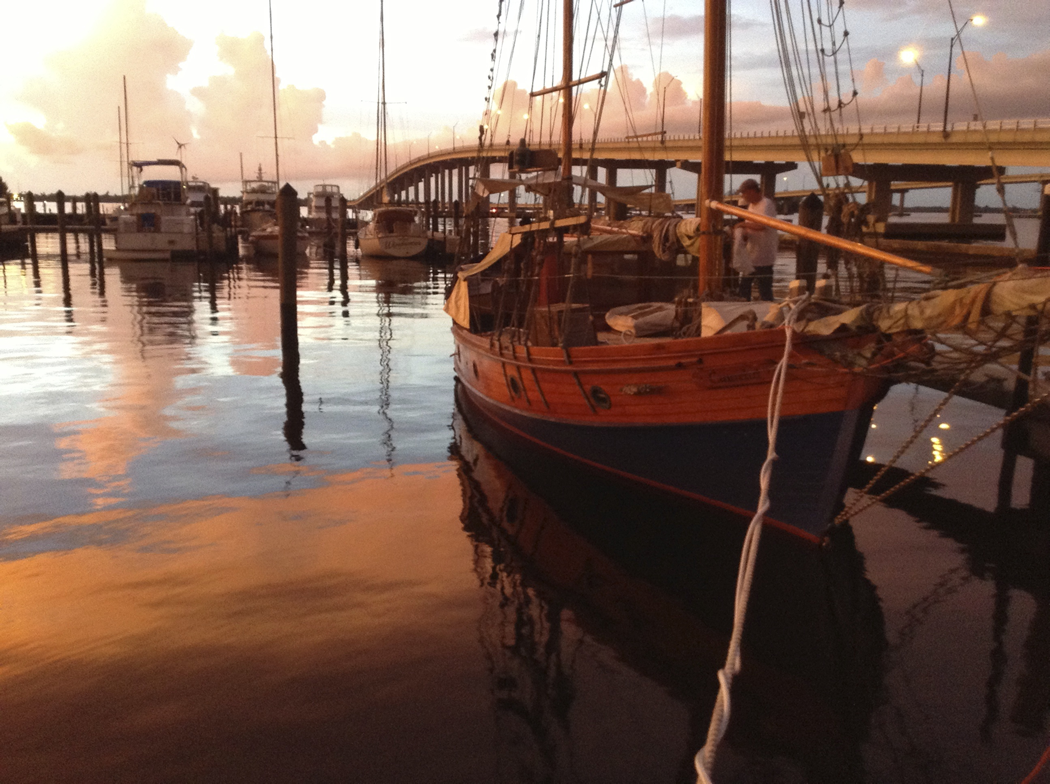 |
| CAMELOT back at a public dock ready for phase I |
| THE PROGRAM - phase One Basic Functional Restoration |
| Funding: mattDays and airbnb rentals. This is a +/- $25,000 investment. |
The work: Repair electrical wiring, lamps, etc. including shore power. Repair 12v/120v converter. Replace battery units and switching. Rebuild bilge pump system. Replace removable deck flooring. New sail covers, hatch covers and awnings. Replace lexan glazing in Pilot House where necessary. Clean, replace lines and running rigging as necessary. Repair bulkhead and cabinet water damage where necessary. Install vent and a/c unit system. Replace ratlines and baggy wrinkles. Repair and Maintenance on all existing instrumentation. End-to-end organizing, cleaning and restocking of backup materials. Painting, varnishing and polishing. Replace davits and repair the rowing/sailing dingy. Check out all cleats and rigging hardware. Review safety equipment and replace as necessary. Find downtown dockage good for B&B, day sailing venue. Review corporate papers, registration and insurance policies, etc. Restore check lists and ship board procedures. Install on-board Internet, phone, video, speaker systems. |
| Function Accomplished: CAMELOT will be returned to Her traditional look, fit and polished and suitable for short live aboard stays and sailing in and close to protected waters (not blue water sailing of long duration). CAMELOT will be structurally and mechanically stable and in such condition that the ability to promote Her full restoration and ultimate move to San Francisco is fully supported. In the case that this vision proves impossible, CAMELOT will be ready to sell to a proper owner with the sufficient skills and resources required as a proper steward. |
| Venue: Destination Bread and Breakfast in old town location with day and overnight sail options in coastal waters. This is designed to provide an authentic experience of live aboard sailing and the unique properties of a traditionally rigged wooden boat. |
|
| THE PROGRAM - phase Two Up Grade of All Systems |
| Funding: crowd sourcing campaign. This is a +/- $200,000 investment. The program and just the fact of what CAMELOT is, as well as the perks - sailing experiences, staying on board, etc. - make this an ideal crowd sourcing opportunity. Materials are being gathered for the presentation. |
| The work: The first bow to stern repair, restoration, re-equipping, and reconfiguring of CAMELOT in 25 years. Replace any worm damaged wood. Reattach any loose planking and rib connections. New sails. New wire stays and running backs. New instrumentation and navigation equipment. Slightly modified interior layout. Replace marine plywood with solid teak at water vulnerable areas. Convert lighting to LED units. Replace radar. Check Keel bolts and replace as necessary. Upgrade Galley appliances. Solar panels installed on top of pilot house. |
| Function Accomplished: CAMELOT is a fully equipped for blue water sailing and ready for extended cruising. CAMELOT’s traditional qualities are preserved and She is a fully functional live-aboard world cruiser. The configuration fully supports the San Francisco mission. |
| Venue: Most of this work can be done in the water while CAMELOT is in use (phase I). We have discovered before, if done carefully and artfully, that people like to see the ongoing work being done. This is how it was done in the old days. There will be work that has to be done in periods of non-use and out of the water. We have been through this process before and there is no mystery to it. If CAMELOT had been active, and the cash available, these things would have been done incrementally as a natural aspect of sailing. CAMELOT is 53 years old. As far as I know the work we did between 1988 and 1995 was her first major upgrade. Almost everything is between 20 and 53 years old. The goal here is to get CAMELOT ready for the next 20 to 25 years. |
|
| THE PROGRAM - phase Three San Francisco Home Port |
| Funding: Passage fees for passengers and general funds from Program I. This is a $30,000 Investment. |
| The work: Sail CAMELOT from Ft. Myers through the Panama Canal to San Francisco enjoying many stops along the way. This will be a three month trip meeting and exchanging ideas with local innovators who are exploring worthyProjects. This voyage will create CAMELOT’s persona and brand so it will be established by the time the home port of San Francisco is reached. |
| Function Accomplished: Inauguration of the San Francisco Program. Shakedown cruise of all systems. Crew Training. |
| Venue: Gulf and coastal sailing. Stops at interesting locations from Gulf cities to California cities, providing day sails and city-to-city cruises for CAMELOT’s stakeholders. |
|
| THE PROGRAM - phase Four “CAMELOT By the Bay” |
| Funding: twelve shares in CAMELOT at $ 30k each with a one twelfth equal share contribution for ongoing annual expense of about $300k a year supplemented by program earnings. |
| The work: ongoing maintenance of Camelot. Development of CAMRLOT By the Bay Dialog Sessions. Conducting sail training experiences for youth. Planning and conducting two extended sails per year. Scheduling Owner’s private CAMELOT time. Being part of local celebrations and events. |
| Function Accomplished: A strong presence and memory of a stimulating and benign kind is added to the San Francisco Armature to facilitate mediative, self aware, useful change. |
| Venue: San Francisco Bay and tributary sailing, including day trips around the Farline Islands and back, with two 10 day coastal cruises a year. |
|
| THE PROGRAM - A Synthesis of Circumstances |
| In the ValueWeb Model, the organization and market are one thing forming a feedback driven network architecture where ownership/management, user/customer, provider/producer form a web of relationships which are systemic and harmonious. |
| What makes a market is the consequence of design, planning and production yet in the end the magic happens or not. Why one product or service offering works and another, apparently as useful, does not have a measure of mystery about it. There is a synergy of a myriad of apparent and subtle aspects which combine to cause the necessary alchemy. The thesis which supports this Program Statement is that there exists an abundance of philosophical personal, professional, social, historical, economic and esthetic factors which combine to produce a strong argument that CAMELOT by the bay will be a successful venture and enduring Enterprise. If this is made so, I will have fulfilled my commitment to this unique and beautiful manifestation of the craft and mechanical arts. |
|
| THE PROGRAM - A Symbol and Fact |
| When I use the work symbol in the architectural sense I use it as the Egyptians did in the time of the pyramids. This use is the opposite than the way the Greeks employed it, which is the how we use symbol today. In Egyptian architecture a symbolic element was the direct representation and statement of a real fact. In our time, this is reversed wherein a physical object represents a concept or desire. An automobile ad, as example, can show a sleek machine on a curvy road yet often what is actually being sold is the idea of sex, power or position. |
| The function of architecture requires the balanced syntheses of shelter, arrangement and expression. Expression, in this context, is the direct symbol of the purpose, setting, meaning and unique qualities of a specific work of architecture. CAMELOT, to meet this definition, brings Her own unique view of life to the program of use She is commissioned to provide. Every aspect of Her “built environment,” and how She is used, becomes a direct message of one single theme. |
|
| |
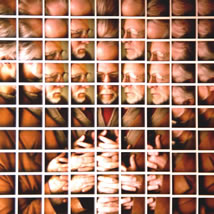 |
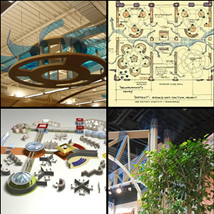 |
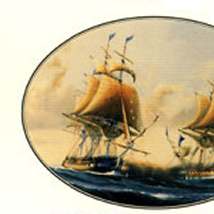 |
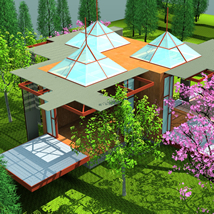 |
| |
Pieces of Matt |
Armature Systems |
the USS CONSTITUTION |
Metatron Cube Patio Unit System |
| |
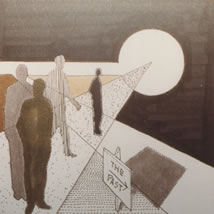 |
|
|
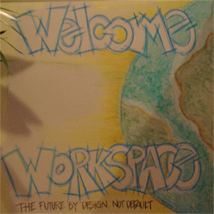 |
| |
Quest |
Planetary Architecture |
The 4 Step Model |
a Future by Design... |
| Syntopical Reading was first developed by Mortimer Adler and outlined in How To Read a Book, applied to his work on the Great Books of the Western World and employed by him for the various courses he taught throughout his lifetime. The idea is to read several books, together, to query the authors and engage them in a vigorous dialog. The essential query is to learn what many authors have to say about a reader’s question that none of them address on their own. This is the very definition of active reading. |
| The Program “CAMELOT by the bay” rests on many design assumptions. Reading this page and the materials provided by the links above and list below, will not “prove” that this is a viable program. It does provide a myriad of ideas which set context and can inform a decision to participate in one or more of the many possible ways that this dream provides. You have to recreate it for yourself to find the fit with your dream. |
| The reading list: [Notes and link coming]. |
|
| Bucky Fuller defined two kinds of tools: craft tools and industrial tools. He said that a craft tool is one an individual can conceive of, make and use alone even thought the tool, and its technology, may be shared with others. He said that an industrial tool ,even if conceived by an individual, can only be made and used by many. He gave as an example of a craft tool a cup or a hammer. For an industrial tool, he cited the Queen Mary steamship. Even a craft tool which is mass produced by modern means remans in the domain of an individual or small group. |
| Humanity is now building a new class of tool we call “smart” tools. In time, it is argued, these can become truly intelligent. When this happens, tool, intelligence and human -- as language terms -- will have to be redefined. |
| CAMELOT sits at the intersection of these three type of tools. Joshua Slocum hand built a boat nearly the size of CAMELOT and sailed around the world alone before the turn of the 20th century. A decade ago, flying back to California, I was seated next to an airline pilot and we were swapping air and sailing stories. After reviewing navigation issues, he told me that I had better navigation equipment than he did on a 727. It has long been noted that most tools lack having much personality yet many somehow become expressive and project presence and personality. CAMELOT certainly does this. In the cybernetic sense She is tightly woven into a level of complex interactions that makes Her a living system. I do not think of Her as a tool in the dead sense of the word. CAMELOT is a Strong Memory of humanity and tool making. She sails at the intersection of past and future centuries. She provides experience and reflection on how we conduct this aspect of our personal and social lives. |
|
click on the drawing below to read a short biography of CAMELOT’s designer and what it means to have “an Angelman yacht” |
| CAMELOT’s orinial sail plan and layout |
posted:
July 13, 2013 • updated August 29, 2013 @ 9:25 PM @Elsewhere |
SolutionBox
voice of this document:
INSIGHT • POLICY • PROGRAM |
| |
|
click on graphic for explanation of SolutionBox |
|
© 2013 Matt Taylor text and photos 707 684 0833 |
|
| Return to Matt Taylor’s Notebook Index |
|
|
| GoTo Camelot’s Legacy web site |
|
|
|
|
|
\\\\\\
|